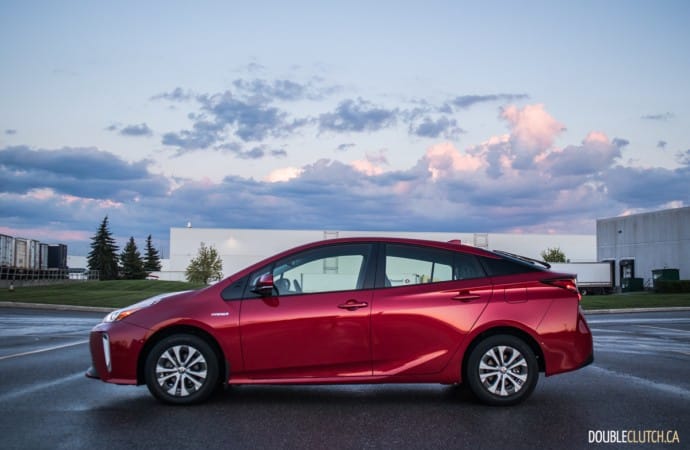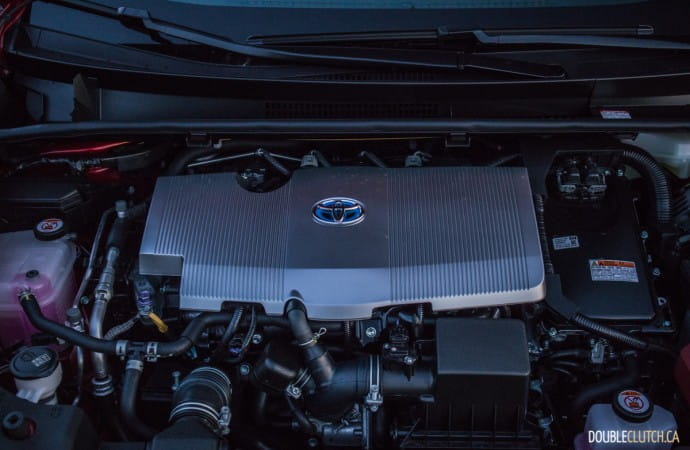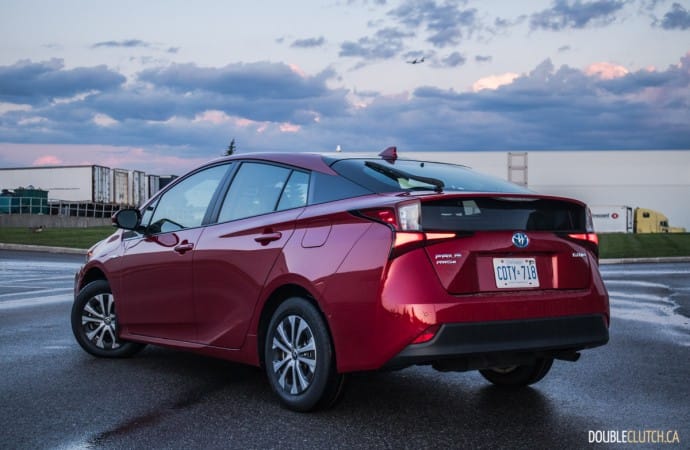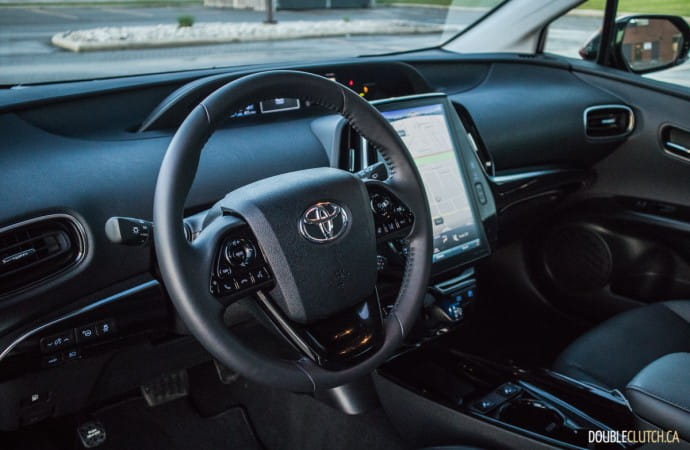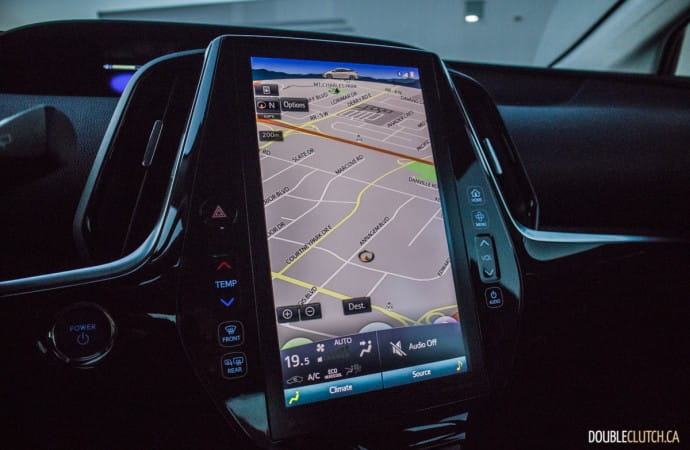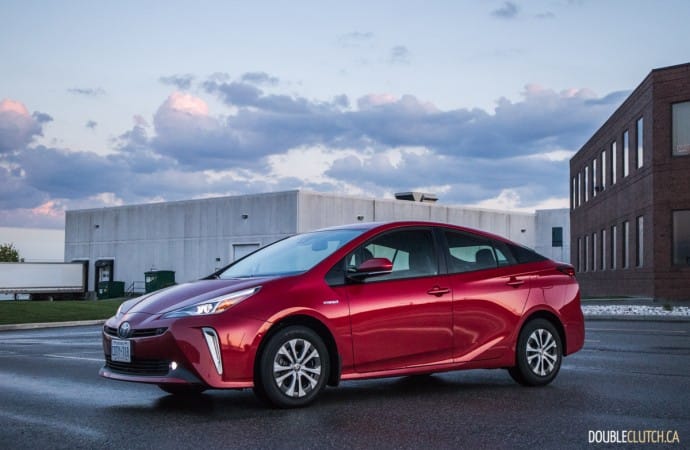Self-proclaimed “car enthusiasts” all over the Internet regularly take shots at the Prius for being boring and uninspired, but that just means they don’t get the point of it. This is a car designed by its engineers and is the epitome of an engineer’s car. Toyota is trying to get an advantage over its hybrid competition by adding the option of all-wheel-drive, so we borrowed a 2019 Toyota Prius AWD-e for a week to see just what it offers.
The Prius is not perfect, and its flaws start, subjectively, at its looks. It’s designed purely for aerodynamics and maximum efficiency. Unfortunately, this comes at a price, and the price is that we now have one of the most unsightly vehicles on the road today. The facelift for 2019 modifies the front and rear fasciae to make it a much more palatable commuter, lifting cues from Toyota’s own Prius Prime (reviewed here). As such, the latest model is more inoffensive than blatantly ugly – we can live with this without any qualms.
Toyota’s Hybrid Synergy Drive powertrain is easily one of the best hybrid setups in the business, and is part of the reason the Prius sells amazingly well in all markets. It’s comprised of a 16-valve 1.8L Atkinson-cycle inline four-cylinder engine that’s good for 96 horsepower on its own. It’s coupled to a 71-hp electric motor and is good for combined system output of 121 horsepower. The new AWD-e model adds a small 7-hp electric motor at the rear wheels, and all of this is hooked up to a 1.3-kWh battery pack.
Quick is something the Prius is not, especially at highway speeds or when merging, but again, that’s not the point. This is the perfect city car and is also likely the easiest car to zip around the city in. The 34.8-foot turning circle is tight and the steering wheel, while not exactly “engaging” whirls around effortlessly. The Prius goes exactly where it’s pointed and there’s never any fuss. The transition between the electric and gasoline motors is imperceptible and has been improved with every iteration of Hybrid Synergy Drive.
You can tell this is an efficiency-focused vehicle when driving, and there is a “score” feature that’s built into the instrument cluster atop the dashboard. At the end of each drive, it gives you a score out of 100 based on how efficient your driving style was, factoring in climate control use as well as throttle modulation. It even gives you suggestions on how to improve your score the next time around. It almost becomes a game where drivers can challenge themselves, with the reward being savings at the gas pumps.
The AWD-e model weighs about 150 pounds over the standard Prius, and as such this takes a slight toll on fuel economy. Even still, Toyota Canada rates it at 4.5L/100km city and 4.9L/100km on the highway. Our test demolished these ratings, resulting in just 4.0L/100km in combined driving. The tiny 40L fuel tank can still have a theoretical cruising range of about 1,000km if the driver is being very light-footed, as we saw many individual drives resulting in 3.5L/100km or less. As expected, the Prius AWD-e gets around just fine on regular 87-octane fuel.
The all-wheel-drive system in the Prius is a slip-and-grip one that’s only functional at speeds below 70km/h, to assist in low-grip situations and when the car is legitimately stuck. It also adds a half-centimeter of ground clearance over the FWD model. Our test took place in the spring and we experienced no wet or inclement weather, so save for slightly higher fuel consumption, the Prius AWD-e was indistinguishable from the regular model. This isn’t a bad thing at all, because Prius drivers want simplicity and ease of use.
The Prius AWD-e is priced at $28,990, a $1,000 premium over the standard model. Our test vehicle was the Prius Technology AWD-e ($32,990) with the Technology Advanced package (an $1,800 premium). The Technology adds the 11.6” touchscreen, SofTex interior, heated front seats and wheel, and Toyota Safety Sense P. The Technology Advanced package adds a heads-up display, adaptive headlights, Intelligent Clearance Sonar and park assist, and garage door opener. This is the top trim available on the Prius, and comes in at $34,790 before taxes and fees.
A huge number of taxi fleets and ride share programs are using the Prius for urban passenger transport, and it’s very easy to see why. The car is extremely roomy, with plenty of space for four on board. Entry and exit is very easy, and there is plenty of head and legroom for all passengers on board. At 6’0, I found it a bit hard to get the perfect driving position, because my right knee kept bashing into a plastic piece of the dashboard that juts out. The SofTex seats don’t look as premium as Lexus’ NuLuxe applications, but they should wear extremely well over the long run. Unfortunately, the eco-friendly materials mean there is a lot of plastic inside the Prius.
One of the biggest challenges with the Prius’ is the infotainment system, which consists of a 11.6” portrait-oriented touchscreen. It’s a system that looks very nice, but slow to respond and clunky in operation. The volume controls are on the wrong side and are touch-sensitive, making them difficult to locate and operate without taking your eyes off the road. There is no Apple CarPlay or Android Auto connectivity, which will soon be rectified by a software update. On the positive side, the instrument cluster above the infotainment screen is nifty and offers a plethora of useful information.
In the hybrid segment, the Prius’ main competition comes from the Honda Insight and Hyundai IONIQ (reviewed here), both about the same size and with a similar focus toward conserving fuel. Both rivals are less conservative looking, but as a result are also not quite as aerodynamic. We observed 6.7L/100km with our test of the Insight (reviewed here) and 4.6L/100km in the IONIQ. The Hyundai is close, but the level of hybrid tech isn’t quite as bulletproof as Toyota’s setup – our vote would stick with the Prius.
I was once one of those self-proclaimed armchair critics, and when I was in my early twenties, I would eye-roll at the thought of owning something practical. However, I now own two rear-drive summer toys with manual transmissions, and have no desire to row gears in Toronto’s rush hour traffic. The 2019 Toyota Prius AWD-e is a solidly excellent commuter with minimal frills and just one goal in mind – to save you as much as it possibly can at the pumps while effortlessly getting you where it needs to go. This is an awesome year-round commuter for our climate.


















